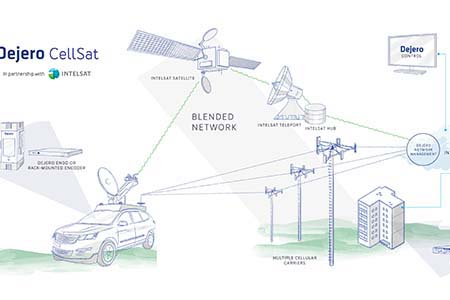Consumer viewing habits have changed dramatically in the last couple of years with viewers wanting to watch content at their convenience on their preferred device. Consistent, high-quality pictures and sound are now accessible from multiple devices, on demand and available anywhere. Live and linear content remains an important part of this viewing experience, often a […]

Consumer viewing habits have changed dramatically in the last couple of years with viewers wanting to watch content at their convenience on their preferred device. Consistent, high-quality pictures and sound are now accessible from multiple devices, on demand and available anywhere. Live and linear content remains an important part of this viewing experience, often a key driver of consumer loyalty and operators revenue
With new technologies, the required quality of service levels necessary to deliver video over multiple networks to multiple devices can be achieved. Operators, however, need to generate multiple thousands of versions of streams to deliver the hundreds of linear channels currently forming their line-up to an ever-increasing number of devices, over both managed and unmanaged networks of different capacity. This is an obvious scale problem.
Video compression plays an important role in delivering content to consumers devices. Efficient video compression can help to reduce network bandwidth and storage requirements, therefore, shrinking operating costs. Dense and flexible equipment reduces ongoing investment, thus helping to increase profit margins.
However, while MPEG-4 AVC support is widespread in todays video clients, adaptive streaming delivery formats are still multiple and proprietary. The MPEG-DASH standard is gaining popularity and its widespread adoption would help to avoid repackaging streams for different devices, simplify DRM integration and reduce service provision costs at the headend and on the network.
But will it be enough? Current trends already show that network traffic is on the rise on managed, un-managed and home networks and this is about to escalate as the capability of connected devices increase to support new trends such as 1080p, 3D and 4K UHDTV resolutions.
There will be an estimated 15 billion connected devices by 2015, and demand for higher resolutions requires a new compression technology to keep network bandwidth and storage costs as low as possible for operators and service providers.
High Efficiency Video Coding (HEVC) is the latest video coding standard effort that is currently being developed by the Joint Collaborative Team-Video Coding (JCT-VC), a collaborative project between the ITU-T Video Coding Experts Group (VCEG) and the ISO/IECE Moving Picture Experts Group (MPEG). This new video compression standard aims to have the same revolutionary impact of its predecessors, which effectively enabled the explosion of digital entertainment consumption. The first major breakthrough was marked by the arrival of the MPEG-1 video compression standard. MPEG-1 helped to spark the beginning of digital content delivery to consumers, including video CDS, CD interactive and near broadcast quality video.
In 1994, the arrival of MPEG-2 formed the catalyst for the deployment of digital television and digital video storage, which enabled the biggest game-changing shift in television since the introduction of colour.
The number of broadcast channels grew rapidly and consumer demand for better quality services increased. The advent of the third generation of video compression standards ITU-T Rec. H.264, ISO/IEC 14496-10 or MPEG-4 Advanced Video Coding (AVC) in 2003 addressed these issues and effectively enabled the mass-scale deployment of HDTV to the home by offering a 50% increase in compression efficiency compared to MPEG-2 Video for consumer applications.
Further enhancements to the standard were made over the next six years, with the Fidelity Range Extensions (2004), Scalable Video Coding (2007) and Multiview Video Coding (2009) expanding its applicability.
AVC enabled very low bitrate video to be delivered to handheld devices. HEVC will further revolutionise the video delivery world by improving coding efficiency over AVC by another 50%, effectively halving the bitrate yet again to achieve the same picture quality.
The increased toolset and algorithmic complexity required to achieve the higher efficiency will demand far greater computational power from compression equipment, with early estimations suggesting it will be up to 10 times greater than AVC.
As operators and service providers look to give their consumers more and better content than ever before, the case for introducing a new generation compression codec is clear.
We stand at the verge of a truly converged, multi-screen television world, with growing demand for accessibility of enhanced services offering real-world experiences.
HEVCs promise of halving the bandwidth utilisation translates into greater reach of services over DSL, dramatically improved peak-bandwidth utilisation for adaptive streaming over unmanaged networks, unlocking high-quality video delivery over 4G/LTE mobile networks, allowing for the distribution of full-resolution 3DTV and ultra high-definition TV (UHDTV) services cost-effectively and much more. Standardisation is underway, with January 2013 set as the date for ratification.
Luke Williams is Middle East technical sales support engineer and Fabio Murra is head of TV compression portfolio marketing at Ericsson.













































































